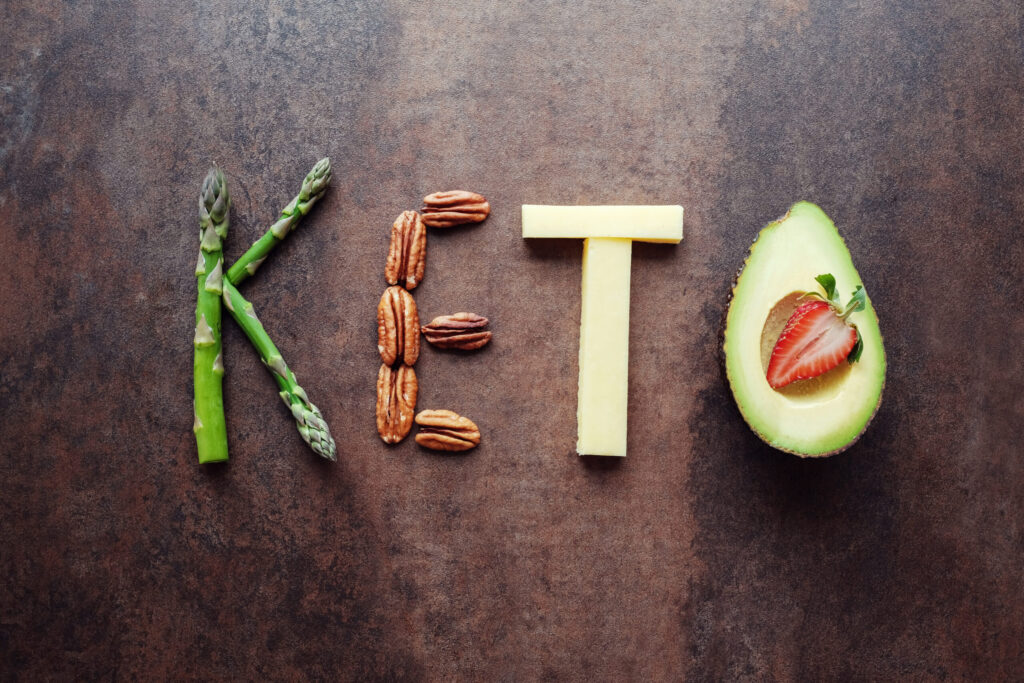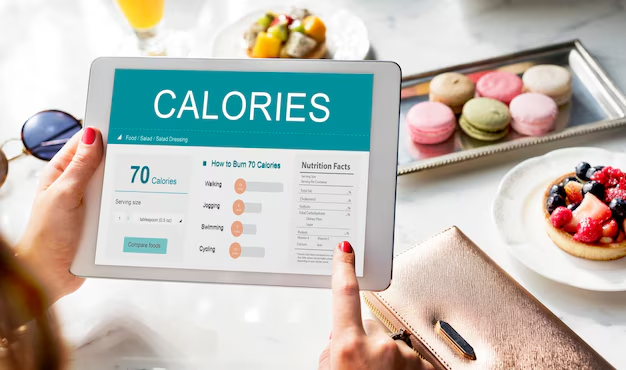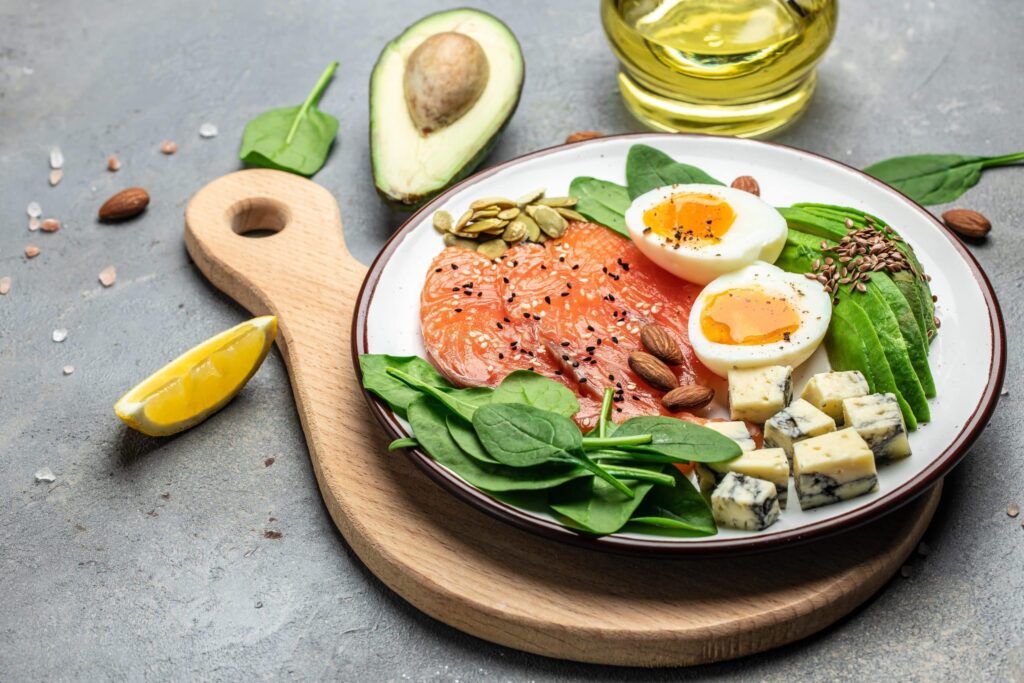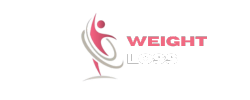The keto diet has gained a lot of attention for its ability to help with weight loss, increase energy, and support mental clarity. It focuses on eating low-carb, high-fat foods to help the body enter a state called ketosis. In this state, your body burns fat for fuel instead of carbohydrates. Many people have found success with this method, but starting can feel overwhelming, especially with so much information available.
A good keto diet plan for beginners should be simple and easy to follow. It usually includes foods like meat, fish, eggs, cheese, nuts, and healthy oils, while avoiding bread, pasta, rice, and sugary snacks. Drinking plenty of water and planning your meals ahead of time can also help you stay on track. It’s important to understand which foods to include and which to stay away from in order to reach your goals.
To succeed on the keto diet, stay consistent and give your body time to adjust. You may feel tired at first, but this usually passes as your body adapts to using fat for energy. Tracking your progress and being patient are key parts of the journey. With the right keto diet plan for beginners, you can enjoy steady results and long-term health benefits.
What Is the Keto Diet ?

The keto diet is a way of eating that focuses on high fat, moderate protein, and very low carbohydrates. By cutting down on carbs, the body enters a state called ketosis. In this state, your body starts using fat for energy instead of carbs. This change can help you lose weight more effectively and use stored fat as fuel.
A keto diet plan for beginners helps make this process easier by guiding you on what to eat and what to avoid. When your body stays in ketosis, it may also improve insulin sensitivity and reduce inflammation. These health benefits make the keto diet popular for those wanting to improve their overall well-being, not just lose weight. With the right plan and consistency, the keto diet can offer long-lasting results.
The Science Behind Ketosis
Under normal circumstances, your body uses glucose (sugar) derived from carbohydrates as its primary source of fuel. However, when you drastically reduce your carb intake, your body begins to look for an alternative energy source. This is when it starts converting fat into ketones, which are then used for energy. Ketones are an efficient fuel source for the brain and body, which is why many people report feeling more mentally alert and energetic while in ketosis.
How the Keto Diet Works
To achieve ketosis, you’ll need to significantly reduce your carbohydrate intake (usually to around 20–50 grams per day). While the typical macronutrient breakdown for keto looks like this:
Fat: 70-75% of your total daily calories
Protein: 20-25% of your total daily calories
Carbohydrates: 5-10% of your total daily calories
What Happens When You Cut Carbs ?
When you reduce your carb intake, your body starts to produce less insulin. Insulin is the hormone responsible for storing glucose, which comes from the carbohydrates you eat. With fewer carbs, your body has less glucose to store.
This change encourages your body to begin burning fat for energy instead of relying on glucose. As a result, many people notice weight loss soon after starting the keto diet. It also helps your body become more efficient at using fat as a fuel source.
A keto diet plan for beginners is useful for guiding this transition smoothly. By following a structured plan, you can manage your carb intake, support fat burning, and improve your metabolism. Lower insulin levels also reduce fat storage, helping you reach your health goals more effectively.
Benefits of the Keto Diet
Weight Loss: When your body starts using fat for energy instead of glucose, weight loss can happen quickly. Many people on the keto diet notice a drop in weight, especially during the first few weeks. This is often due to the body releasing stored water and fat as it adapts to burning fat for fuel.

Improved Mental Clarity: On the keto diet, your brain gets energy from ketones, which are a more stable fuel source than glucose. This can lead to better focus, sharper thinking, and improved mental clarity throughout the day.
Increased Energy: Once you’re fully in ketosis, your body has a steady supply of energy from fat. This helps reduce energy crashes, making you feel more energetic and alert all day long.
Better Blood Sugar Control: A keto diet can help lower insulin levels and improve how your body handles sugar. This is especially helpful for people with type 2 diabetes or those trying to manage their blood sugar.
Reduced Inflammation: Following a keto diet may reduce inflammation in the body. This can help ease symptoms of long-term conditions like arthritis and support better overall health.
Improved Heart Health: The keto diet can support a healthier heart by lowering blood pressure and reducing levels of bad cholesterol (LDL), while also increasing good cholesterol (HDL), leading to better cardiovascular health.
Starting the Keto Diet: A Step-by-Step Guide for Beginners
Calculate Your Macronutrients
Before starting the keto diet, it’s important to understand how much of each macronutrient—fat, protein, and carbohydrates—you need each day. The main goal of the diet is to reduce carbs and increase fat so that your body can enter a state called ketosis. In ketosis, your body starts burning fat for energy instead of carbs. This shift helps with weight loss and improved energy levels.
A well-balanced keto diet plan for beginners usually includes about 70–75% of calories from fat, 20–25% from protein, and only 5–10% from carbohydrates. By following these general guidelines, your body can stay in ketosis and begin to use fat more efficiently. Understanding your macronutrient needs is one of the most important first steps before starting the diet, and it can help you stay on track and get better results.
Step 1: Calculate your Total Daily Energy Expenditure (TDEE). This is the number of calories you burn in a day.
Step 2: Set your desired calorie deficit (typically 10-20% fewer calories than your TDEE for weight loss).

Step 3: Break down your calories into the keto macronutrient ratio:
70-75% from fats
20-25% from protein
5-10% from carbohydrates
Tools like MyFitnessPal or Cronometer can help track your food intake and make sure you stay within your macronutrient goal
Prepare Your Kitchen: Stock Up on Keto-Friendly Foods
Here’s a list of what to buy:
| Category | Foods |
|---|---|
| Healthy Fats | Avocados, Olive oil, Coconut oil, Butter (grass-fed), Heavy cream, Cheese (full-fat), Nuts and seeds (almonds, walnuts, chia seeds, flaxseeds) |
| Protein | Grass-fed beef, Chicken, Pork, Fish (salmon, sardines, mackerel), Eggs, Tofu (for vegetarians or vegans) |
| Low-Carb Vegetables | Spinach, Kale, Broccoli, Cauliflower, Zucchini, Cucumbers, Mushrooms, Bell peppers |
| Low-Carb Fruits | Berries (strawberries, blueberries, raspberries), Lemons, Limes, Avocados (in moderation) |
| Condiments and Spices | Salt, Pepper, Garlic, Vinegar, Mustard, Herbal teas |
Avoid High-Carb Foods
To follow the keto diet successfully, it’s important to avoid foods that are high in carbohydrates. Eating too many carbs can prevent your body from entering or staying in ketosis, which is the main goal of this diet. Ketosis is the state where your body burns fat for fuel instead of carbs.

A keto diet plan for beginners focuses on cutting out foods like bread, rice, pasta, and sugary snacks. These common foods are packed with carbs and can easily slow down your progress. Soft drinks, fruit juices, and even some fruits should also be limited or avoided.
Instead, focus on low-carb alternatives that support ketosis. By understanding what to avoid and sticking to the right food choices, beginners can get better results and stay motivated. Cutting back on carbs is a key step in adjusting to the keto lifestyle.
Sugar: This includes candies, cookies, cakes, ice cream, and other sugary desserts.
Starches: Potatoes, corn, pasta, and rice.
Grains: Wheat, oats, barley, quinoa, and bread.
Processed Foods: Pre-packaged meals, processed meats, and high-carb snacks.
Certain Fruits: Bananas, grapes, and other high-carb fruits.
Remember that reading labels is crucial—many packaged foods, even “healthy” ones, are loaded with hidden sugars and carbs.
Transition to Keto Gradually
Starting a strict keto diet can feel like a big change for your body. In the first few days or weeks, many people go through what’s known as the “Keto Flu.” This happens as your body shifts from using carbs for energy to burning fat instead.
The Keto Flu can bring symptoms like headaches, tiredness, dizziness, nausea, and mood changes. These signs are temporary but can make the beginning of the diet feel challenging. They are a normal part of your body adjusting to ketosis.
A helpful keto diet plan for beginners includes ways to ease these symptoms. Drinking plenty of water, getting enough rest, and adding electrolytes like sodium, potassium, and magnesium can reduce the effects. Being prepared for this stage makes it easier to stay committed and get past the early discomfort.
To minimize this:
Stay hydrated: Drink plenty of water to prevent dehydration, which is common on the keto diet.
Increase electrolytes: Sodium, potassium, and magnesium can help ease keto flu symptoms. Consider taking supplements or adding more salt to your food.
Ease into the diet: If you’re worried about the transition, try slowly reducing your carb intake over a few days to let your body adjust.
Plan Your Meals
Meal planning is essential for staying on track with the keto diet. It helps ensure that you have the right foods available and prevents you from reaching for carb-heavy options. Planning ahead also reduces the temptation to stray from your keto goals.
A well-organized keto diet plan for beginners can guide you in selecting meals that fit your needs. By preparing meals in advance, you can avoid stress and last-minute decisions about what to eat.
Sticking to a meal plan also makes it easier to track your carb intake, ensuring you stay within your daily limits. Consistency is key, and meal planning makes it much simpler to stay committed to your keto journey.
Here’s a sample 1-day keto meal plan for beginners:

Breakfast:
Scrambled eggs with spinach and avocado cooked in coconut oil.
Coffee with heavy cream (no sugar).
Lunch:
Grilled chicken salad with mixed greens, cucumbers, olive oil, and lemon dressing.
A handful of nuts (almonds or walnuts).
Dinner:
Baked salmon with roasted broccoli and zucchini.
Side salad with olive oil and balsamic vinegar dressing.
Snacks:
Cheese slices or string cheese.
Celery sticks with cream cheese.
Track Your Progress
To stay on track with your progress, it’s important to track your weight, body measurements, and how you feel each week. This helps you monitor your success and see how your body is responding to the keto diet plan for beginners.
While weight loss can be quick in the beginning, it’s crucial to remember that your body is going through a significant transformation. Don’t let the numbers on the scale discourage you. Changes in body composition take time.
Fat loss often happens more slowly than water weight loss, but with patience, you’ll see results. Keep focusing on your overall well-being and how you feel, rather than just the scale, and stay committed to your keto journey.
Stay Motivated and Patient
Adapting to a new way of eating can be tough, but consistency is key to success. The keto diet plan for beginners is effective, but it requires patience as your body adjusts. In the beginning, you might experience quick weight loss, which is often referred to as the “honeymoon phase.”
After this initial phase, weight loss can slow down. This is normal and happens as your body shifts from burning carbs to burning fat for energy. It’s important to stay focused during this slower period and keep your long-term goals in mind.
Remember why you started the keto diet in the first place. By staying consistent, you’ll continue to make progress, and over time, you’ll see lasting results. Keep going, and trust the process!
Common Challenges and How to Overcome Them
Keto Flu: As mentioned earlier, the “keto flu” is a common experience when starting the keto diet. This happens as your body transitions from using carbs for fuel to burning fat. Symptoms like headaches, fatigue, and irritability are typical in the first few days or weeks. Staying hydrated and replenishing electrolytes such as sodium, potassium, and magnesium can help ease these symptoms and support your body’s adjustment to the keto diet plan for beginners.
Social Situations: Dining out while on the keto diet can sometimes be a challenge. However, many restaurants now offer low-carb options, such as grilled meats, salads, and non-starchy vegetables. Before heading out, you can also review the menu online to find keto-friendly choices. Planning ahead will make it easier to stick to your goals even in social settings.
Cravings for Carbs: Cravings for carbs are common, especially in the first few weeks of the keto diet. Instead of giving in to the temptation of high-carb snacks, it’s helpful to have keto-friendly options on hand. Items like cheese, nuts, or avocado can satisfy hunger and keep you on track with your keto diet plan for beginners.

Final Thoughts: Is Keto Right for You ?
In conclusion, the keto diet plan for beginners offers a transformative approach to weight loss and overall health by shifting the body’s primary fuel source from carbohydrates to fats. This shift, known as ketosis, can lead to significant benefits such as weight loss, increased energy, and improved mental clarity. However, it’s crucial to follow the plan correctly, especially when transitioning into the diet.
For those just starting, it’s important to understand the basics of the keto diet, including how to calculate your macronutrients, what foods to eat, and how to avoid common pitfalls. Proper meal planning and hydration are key to staying on track and minimizing side effects like the “keto flu.”
Ultimately, the keto diet plan for beginners can be highly effective for those looking to make long-term lifestyle changes. By staying consistent, being patient, and adjusting as needed, beginners can experience lasting health improvements and reach their weight loss goals.
FAQs
- What is the keto diet plan for beginners ?
The keto diet plan for beginners is a high-fat, low-carb diet that shifts the body’s metabolism into a state called ketosis, where fat is burned for energy instead of carbohydrates. This approach can help with weight loss, improve mental clarity, and boost overall health. Beginners typically start by limiting their daily carb intake to about 20-50 grams and increasing their fat consumption to around 70-75% of total calories. - How do I start the keto diet plan for beginners ?
To start the keto diet plan for beginners, begin by calculating your daily caloric and macronutrient needs, focusing on 70-75% fat, 20-25% protein, and 5-10% carbs. Stock your kitchen with keto-friendly foods like avocados, meat, fish, and non-starchy vegetables. Gradually reduce your carb intake and stay hydrated to avoid side effects like the keto flu. - Will I experience the keto flu as a beginner ?
Yes, many beginners experience what’s known as the “keto flu” when first starting the keto diet plan for beginners. Symptoms may include headache, fatigue, and irritability. This occurs as your body adjusts to burning fat instead of carbs. To minimize this, stay hydrated, increase electrolytes, and gradually ease into the diet. - Can I eat fruit on the keto diet plan for beginners ?
While most fruits are high in carbs and should be limited, there are some exceptions on the keto diet plan for beginners. Low-carb fruits like berries (strawberries, raspberries, blueberries) can be eaten in moderation. However, fruits like bananas, apples, and grapes are typically avoided due to their high carbohydrate content. - How long does it take to enter ketosis on the keto diet plan for beginners ?
It usually takes anywhere from 2 to 7 days for beginners to enter ketosis, depending on how strictly they adhere to the keto diet plan for beginners. Factors like carb intake, physical activity, and individual metabolism can influence the time it takes. Monitoring your body’s response and staying consistent with the diet will help you achieve ketosis faster.

